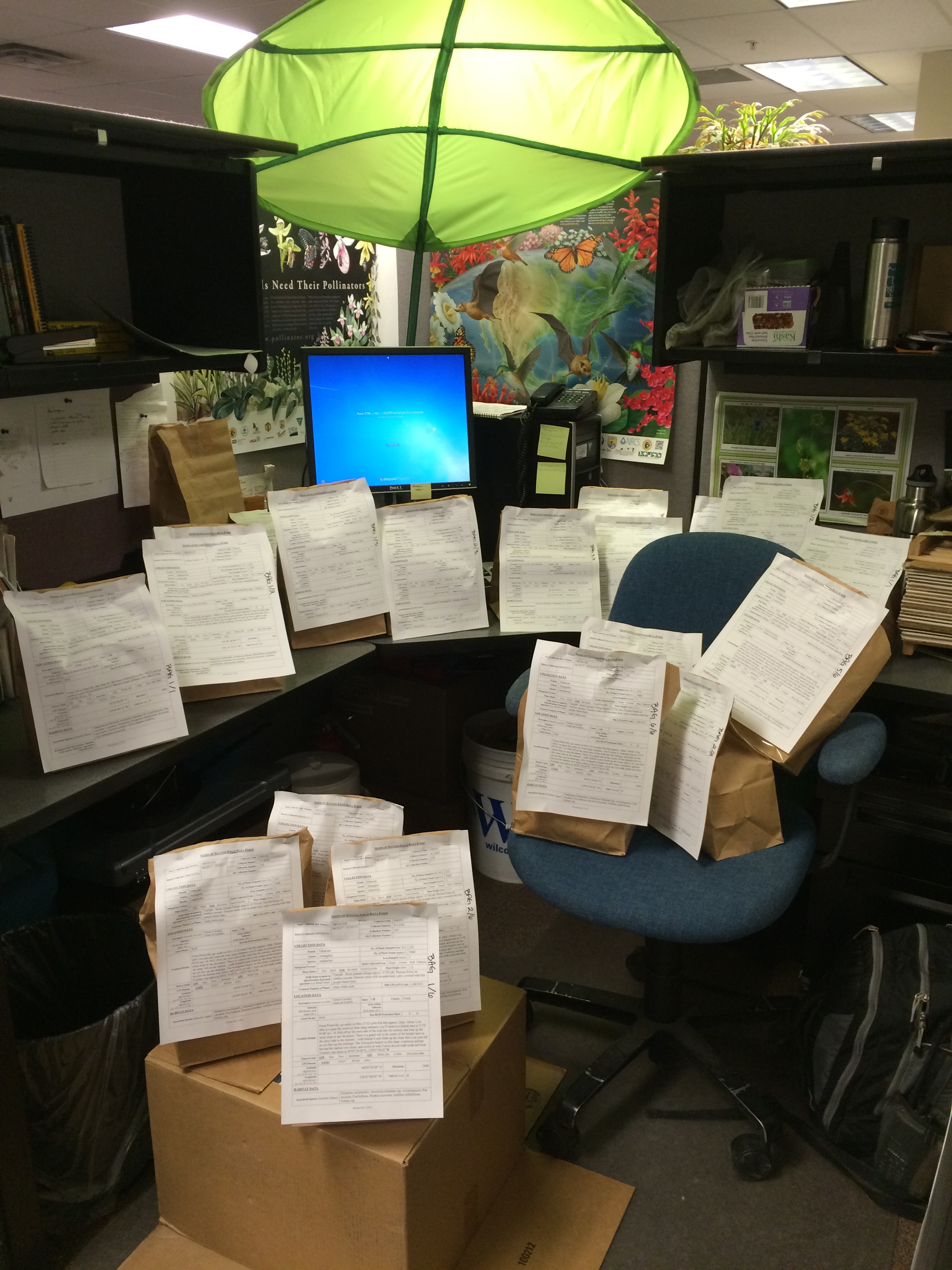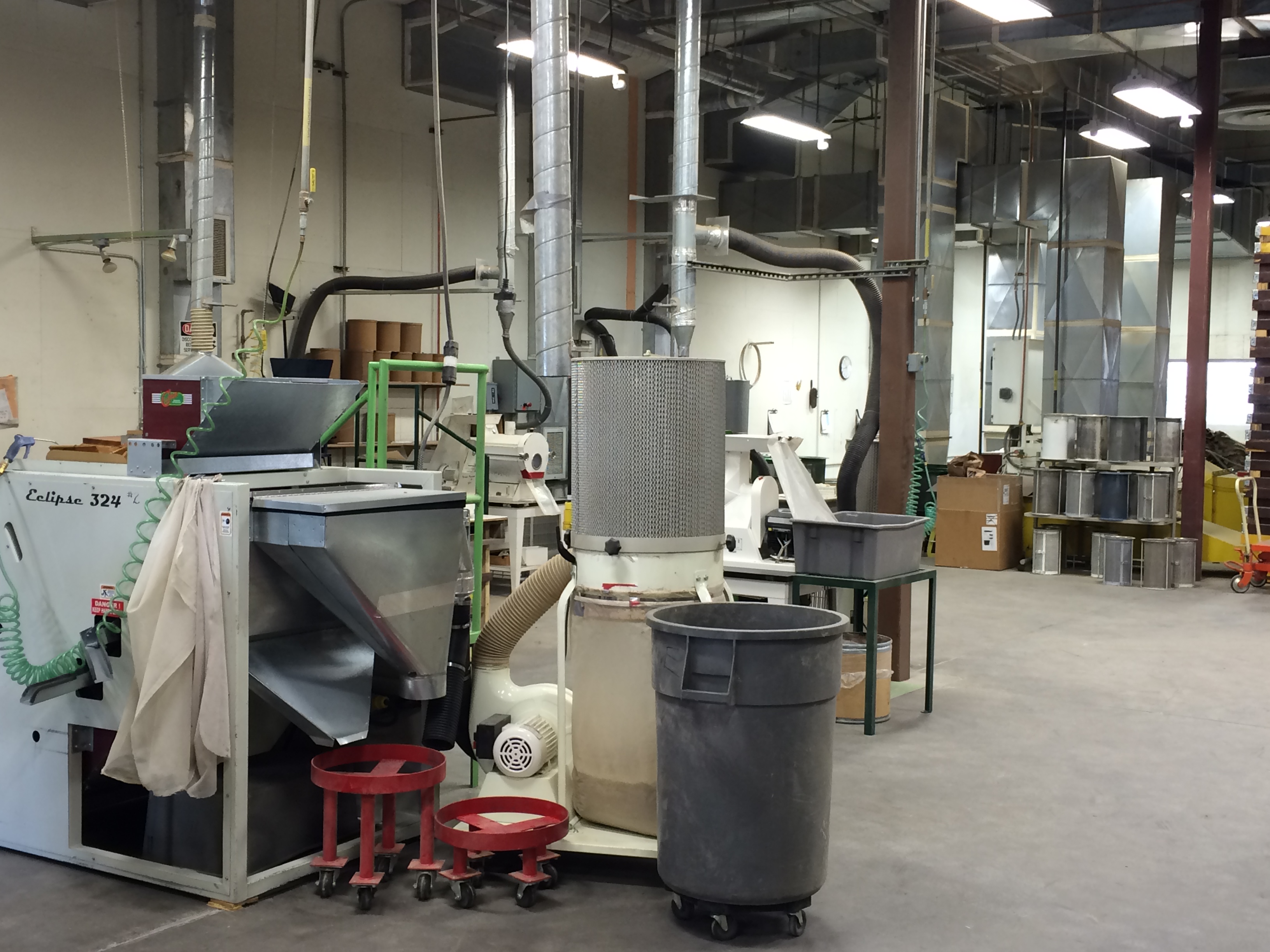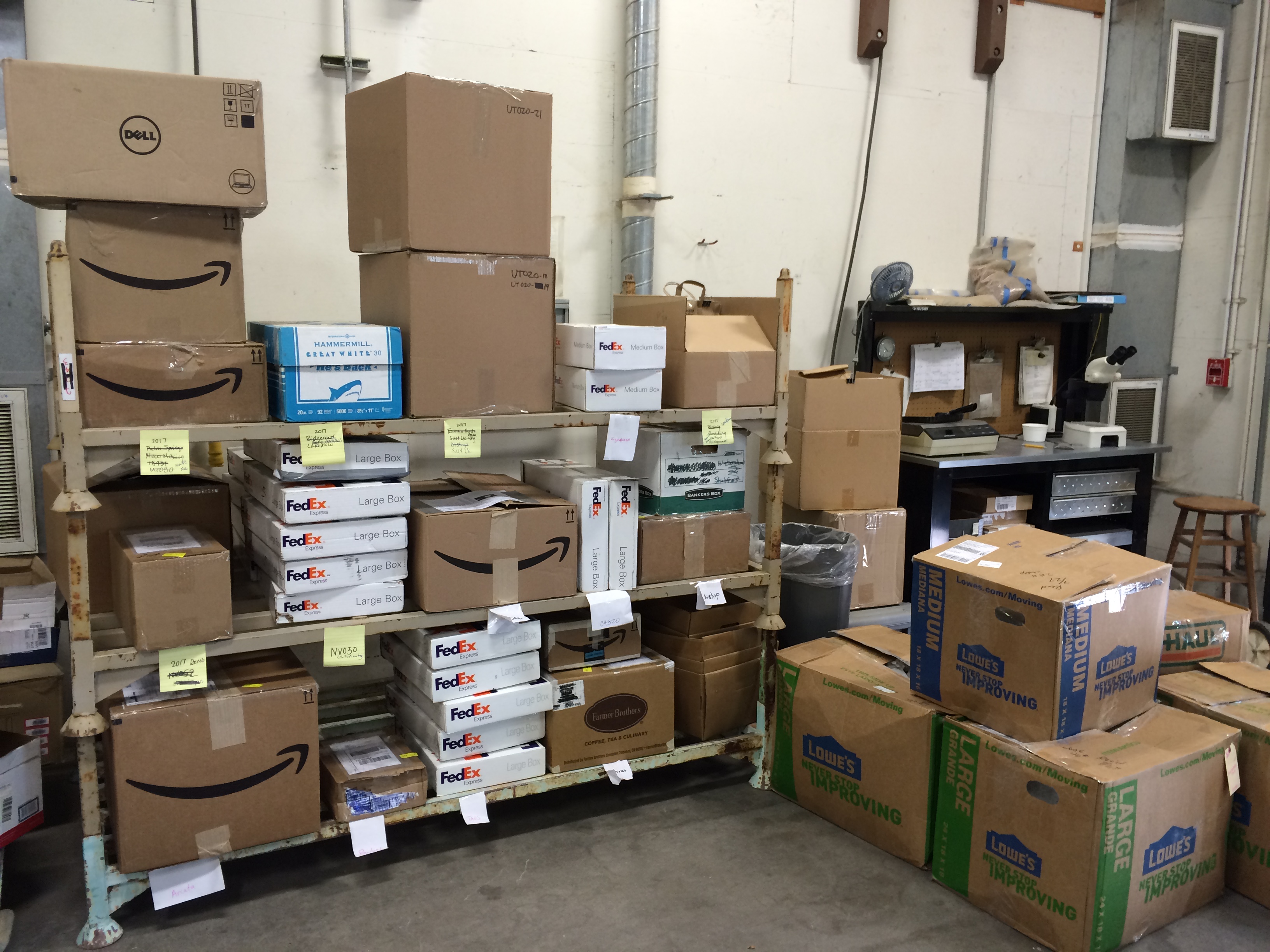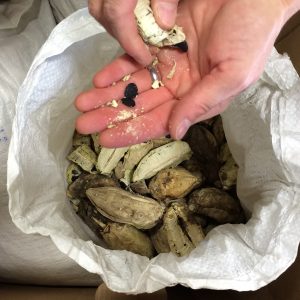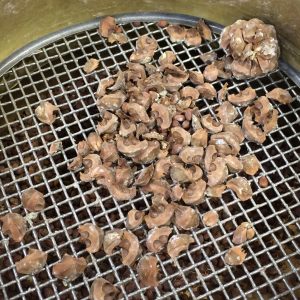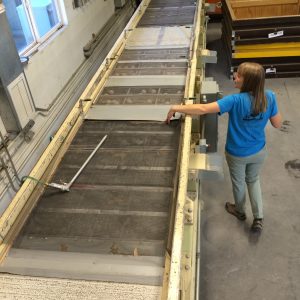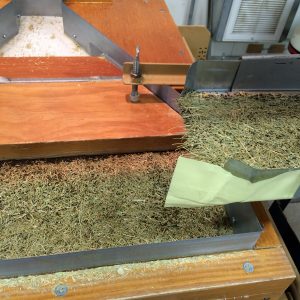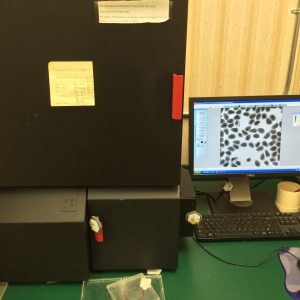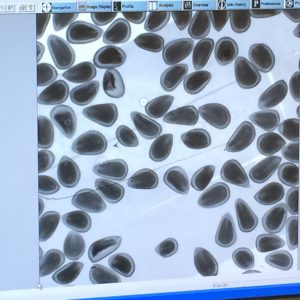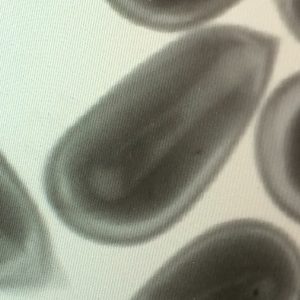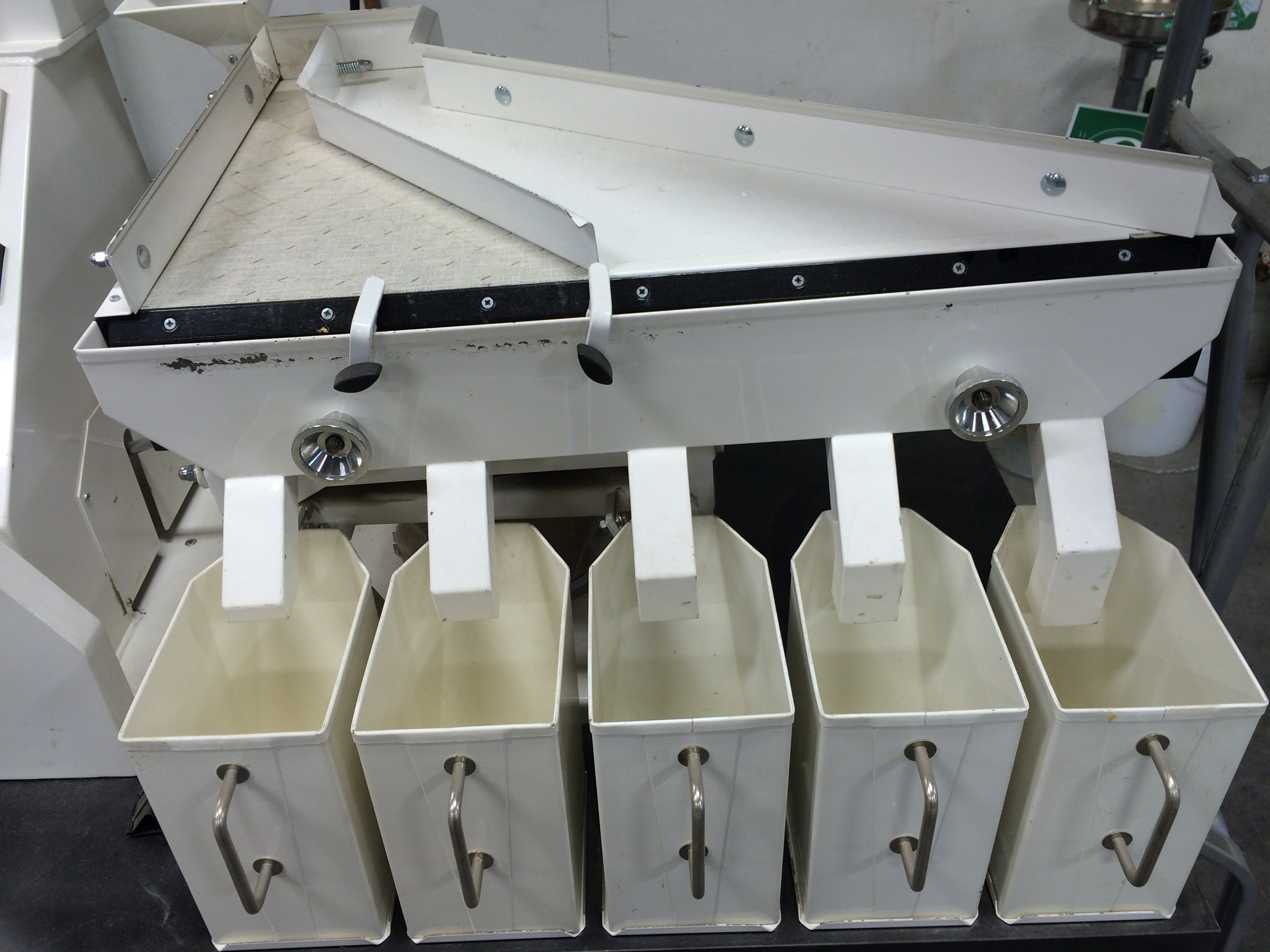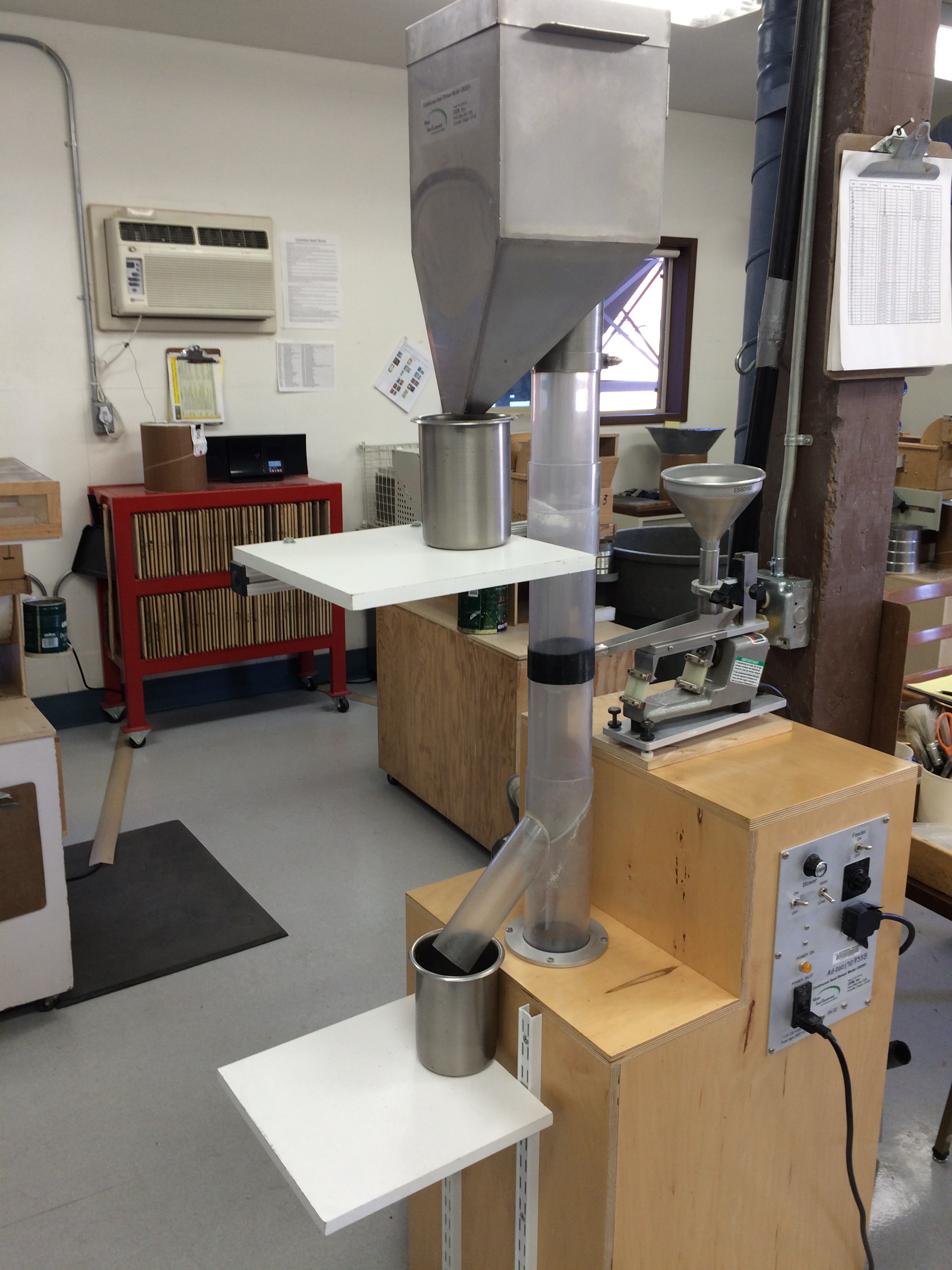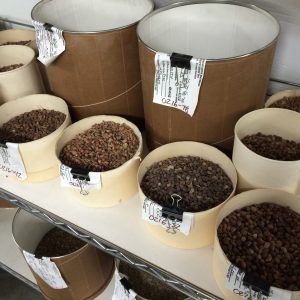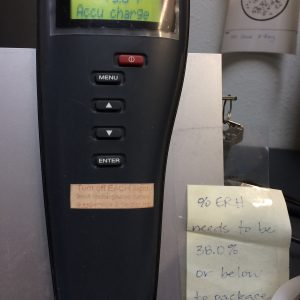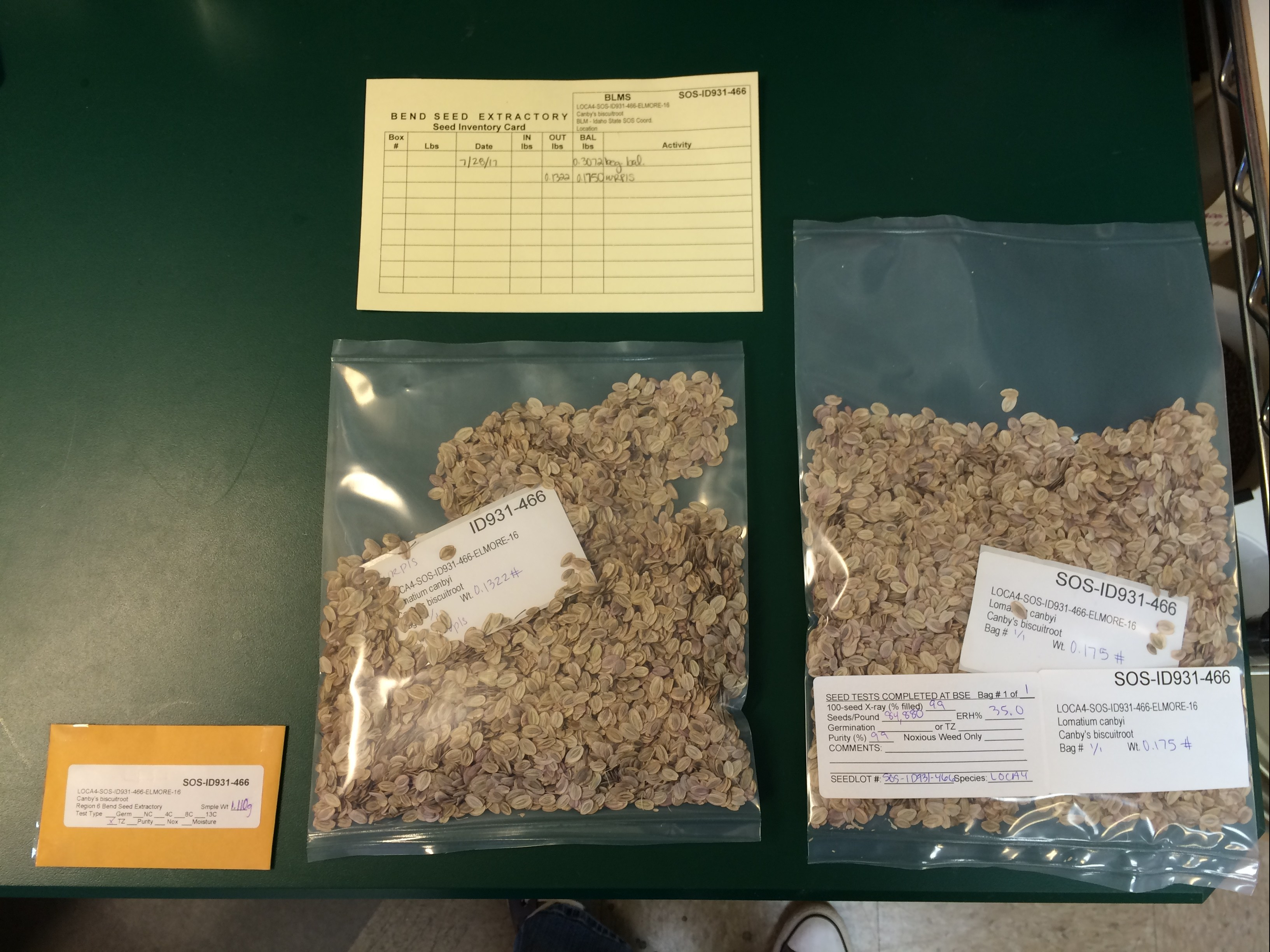When I last left off I had traveled to Nebraska to see the Eclipse after which I asked myself, what could top experiencing the moon moving in front of the sun and turning the world dark for 2 minutes as humans all over the States stared in disbelief?
The obvious answer is collecting more data on Sclerocactus glaucus, of course!!
What finally brought us full circle for the field season here at the BLM Colorado State Office was the return of our crew to Montrose to gather data on both Eriogonum pelinophilum and S.glaucus. As we drove over the Southern Rockies on the 70 musing about our return to the cactus that we started this year off monitoring, we looked out of our windows at the changing of the Aspen leaves and felt a little bit of closure to the field season. What a way to go out.

The changing of the leaves
But what lead us back for more data collected after all these months? Basically the years and years of data collected on the Sclerocactus have come to a climax. Carol, my mentor, has spent much of her time at the BLM working towards de-listing this species, and now is the time. Our return to the cactus was brought on by a need for targeted data to make the reporting more sound and complete.
To be honest, when I type those words, de-listing, as an ecologist, I feel a little guilty. Why would we want to de-list a species when the Environmental Species Act (ESA), that it is protected under, is meant to, well, protect it?
I think this is one of the areas that has been the most enlightening to me throughout this internship. The more that I learn about topics that I had thought I understood, the more I realize that one can feel informed and still not actually fully grasp the subtle nuances of the complex field of threatened and endangered plants.
Let me explain, the ESA was was ratified in 1973, passed by a democratic-majority congress and signed by President Richard Nixon only a year before he resigned his office. This act was created in order to preserve not only the plants and animals that were under threat from human and environmental factors but also to protect the environment they existed in. That is a tall order for an agency like the United States Fish and Wildlife Service (and NOAA fisheries) that is tasked with its implementation. In the beginning, listing was used to protect anything thought of as needing protection under a myriad of potential threats including industrial growth (think reservoirs, mining, and human expansion) and recreational use (including our own species of interest Astragalus osterhoutii and potentially Corispermum navicula due to the Wolford Dam and off-road vehicle use, respectively). Also, in the beginning of the Act many plants were listed with good intention but with less than adequate data.
Here is where the problem lies. In Colorado alone there are 16 listed plant species of the around 900 plant species listed for the entire United States. Now, that may not sound like a very large proportion, but under the current funding level for the US Fish and Wildlife Service and given the amount of constant monitoring required for the responsible management of the populations across the states, it is a lot of work. That is where we come in and why Carol has worked so hard to monitor these species. This work is also done at the District Office level within the BLM CO, who would normally completely shoulder the load, but in this case they are treated with two levels of attention.
All of that sounds grand, but the issue becomes particularly thorny when, in the case of S. glaucus, we come to find that the species is more abundant than originally thought (recall the plants listed in the 70s with little data). Given the limited resources available for monitoring, it quickly becomes untenable to funnel precious resources toward monitoring and managing species that may never have warranted protection in the first place.
Here comes the reality of de-listing. Resources currently allocated to species that are more abundant that previously thought could be used to help a species that are actually in peril or to identify species that might not be known to be in peril. Just think that in the lifetime of the Act there have only been 31 de-listings of listed plant species. When you consider that the intention of the ESA is to recover imperiled species, that is not a large success rate.
Additionally, the use of the Act has changed over time. Remember how I said it was used to protect plants once they are listed? Well, an ESA listing triggers a series of mandatory regulations placed on the species, and the land that it inhabits. There are even critical habitats that are protected regardless of where the plant is found (public or private). Which, as you can imagine, is not something that landowners or entities that could make money off the land, appreciate. So instead agencies have been working to use the Act as a last resort, instead of looking to list immediately they instead promote conservation agreements which are agreed to by a range of stakeholders to protect the plant in question. This happens when involved parties recognize that it is in everyone’s best interest to avoid a listing and decide to come to the table to proactively agree to terms to protect the plant to avoid listing in the future.
I am rather impressed by this idea because it means, ranchers, land managers, mining companies, energy companies, states, and other interested parties come together to resolve differences toward a common purpose. What a concept, but like I have mentioned with P. grahamii, conservation groups don’t always see these agreements as a win. Instead, these groups can be stuck in the old mindset that the ESA is the best way to protect any species. Unfortunately, if conservation groups get their way, that means that many individuals will be subject to regulations and restrictions forced upon them by the ESA, without much recourse save open rebellion against the US Government, which doesn’t typically end well as we’ve seen in the case of the Malheur NWR takeover of 2015. With a listing comes bitterness from industry and a lot more work for regulating agencies (cough cough BLM). It’s a delicate balance. On top of all this, often the protections that come through a collaborative stakeholder based approach can be better tailored to a particular plant and region.
So all in all it is a muddled up, bureaucratic quagmire that can be challenging for different parties to see from the other side’s perspective. But, fear not, that is why we have competent hard working people like Carol and Phil working on it!
Our last outing of the year was actually an overnight trip to Walden where we looked at Corispermum navicula, which, to be honest, was one of the more fun monitoring sites. This plant is an annual (the only one we monitor) and thus we monitor for frequency. This meant walking around the North Sand Hill Dunes for hours with the Esri Collector app on an iPad trying to place ourselves on 300 randomly selected points in search of the plant. What an adventure, with only a few cups of sand found in each one of my shoes by the end.

Brooke an I on the quest for C. navicula
Thanks goodness for winter! I always love the field season and love being outdoors for a while, but I can feel my hands itching to crochet and my sewing machine getting lonely (I know, I am a 1950’s house mom) and I am excited to experience Colorado winter (or any winter at all really)!!

oh, also I ran a marathon, which was painful

A bag of 1,000 Cercocarpus montanus seeds
Until next time when I write about mostly data management and Excel!
Taryn
Colorado State Office


















